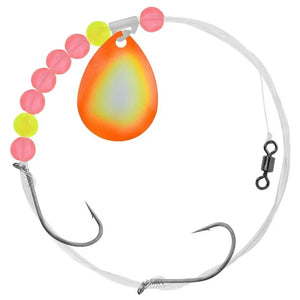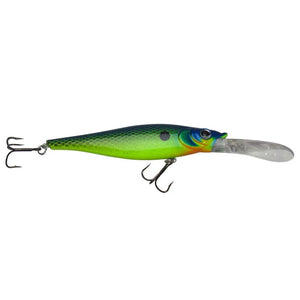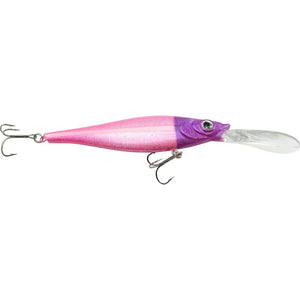Up north, we don’t just call them walleye, they’re pickerel. If you’ve ever felt one shake its head at the end of your line, you know why folks travel across entire provinces just to hook one. They’re not just good fighters and a thrill to catch; they’re good eatin’. Sweet, flaky, and worth every cast.
From easy access roadside lakes to remote fly-in outposts only a floatplane can reach, pickerel fishing in Canada is a true tradition. And if you’ve never watched the sun burn off the morning mist while drifting over a calm northern lake, well… you’re missing out on something special.
For walleye fishing that satisfies both the soul and stomach, head north. The fish are plentiful in Manitoba, Saskatchewan, and Northwestern Ontario lakes, where the air is clean, and the only sound is a loon calling across the water.
Keep reading to learn the fishing techniques that bring walleye to the boat, the baits that keep them biting, and the gear we never leave home without.
Best Walleye Techniques That Actually Work
There’s no magic formula for pickerel, but there are tried-and-true ways to put more fish in the boat. What works in the spring might not work in August, and what works in stained water might fail in the clear shallows.
But if you’re heading out, here’s what we pack and why:
Live Bait and Alternatives
If regulations allow, nothing beats the real thing. These fish are scent-driven, and live bait turns lookers into biters.
- Minnows: Hook ‘em behind the dorsal so they can swim but can’t get away. That struggling motion brings in the big ones every time.
- Leeches: Great when the water warms up. Just enough wiggle to drive a pickerel to your line.
- Nightcrawlers: A classic. Thread one on a harness or jig head and let it drift or troll slowly - Old school but it still pulls fish to the boat.
- Frozen fresh or salted minnows: Not quite as lively, but still loaded with scent and worth having in the cooler for when the bite gets tough.
- Soft plastics: Sometimes they’re all you’ve got, and if you rig ‘em right on jig heads with a slow retrieve, they can hold their own. Scented soft plastics come in every size, shape, and colour you can think of, so you’re never short of options.
Old Timer’s Tip: If you’re losing live bait off barbless hooks, cut up an old rubber tail and slide a small piece on the hook to keep your bait in place.
Go-To Pickerel Tactics
This is where the lifeblood of northern walleye fishing starts; the tried-and-true way folks caught their first pickerel, and how they are still reeling them in.
Jigging
Use a ⅛ to ¼ oz jig head tipped with bait or soft plastic. Drop it down, lift it a few inches, and let it fall naturally. Walleye hit on the drop more than the lift, so keep your line tight and your reflexes tighter.
If you’re ice fishing, same deal but with gloves on.
Still Fishing
Some spots just hold fish. We call them pickerel holes: cool depressions in the lake bed where water stays chilled and the baitfish gather.
Not all pickerel holes are obvious. Sometimes it's that dark patch on your fishfinder — 22 feet deep, surrounded by 14 feet on all sides. That little dip might hold a dozen fish on a hot day.
Other times, it’s a bend in the weedline where bait gathers, or a rocky drop-off with just enough current to stir up the bottom. Sometimes they hug so tight to the reef’s edge, you’d swear you were snagged on rock, until the rod tip starts to dance.
Don’t be afraid to move around until you find them. Drift slowly, mark your GPS, then drop anchor or toss a marker buoy. Once you get a few bits, stay put - they’re likely stacked up down there.
Drop your line about six inches to a foot off the bottom, and let the scent do the work. Nine times out of ten, a live minnow or leech will usually bring action.
Slip Bobbers: The Underrated Classic
Slip bobbers don’t get the love they deserve. They’re deadly effective, especially when fish are suspended or hesitant. Set your depth so your bait sits just above the weed tops or rock piles. Use a small split shot and a lively leech or minnow, and let the wind or a slow drift do the rest.
The real magic is when the bobber tilts, then slides sideways or disappears without warning. You wait half a second, feel the tension, and set the hook — that’s the good stuff.
Trolling
If you don’t know the lake or the fish are scattered, trolling helps you cover ground. Use a bottom bouncer with a worm harness or a crankbait with some wobble.
Change speeds. Change direction. Try tight turns, which cause your lure to flutter on one side and speed up on the other. Sometimes that change triggers a strike.
Casting Crankbaits and Spinners
On overcast days or early evenings, casting crankbaits near weedlines or rocky shorelines can wake up the bite. Spinners with a flash of silver or gold can draw them in from a distance, especially when the water’s stained.
Change up your retrieval. Some days they want a slow roll, and other days they’ll only hit it if it looks like it’s running scared.
Old Timer’s Tip: Give your lure seven to ten casts toward different targets with different retrieval strategies before swapping it out.
Why the Bite Gets Better After Dark
Once the sun dips behind the treeline, it’s not time to pack it in; it’s time to switch gears. At night walleye cruise the shallows looking for an easy meal, especially on calm, warm nights.
Some of the best bites happen when everyone else is sitting around the campfire. Toss a slip bobber with a live leech just off the dock, or slow-crank a black and silver crankbait near shorelines with gravel or chunk rock. These fish hunt by feel and vibration, so switch to darker lures, go slow, and hang on tight.
If you’ve never fished under the stars with the northern lights flickering overhead, you’re missing one of the finest moments in Canadian angling.
Where to Find Walleye in Spring and Summer
Walleye don’t swim everywhere; they follow food and temperature. Cloud cover, wind, and water clarity all affect where they’ll be and what they’ll bite.
- Early spring: Shallow bays with a soft bottom warm up first. Look for 8–12 feet of water, especially near creek mouths.
- Mid-summer: Deeper holes, edges of reefs, or where a cold creek dumps in. This is where the pickerel settle when surface temps climb.
- Evenings and mornings: Walleye move shallow to feed. Cast near weedlines or shore structure.
Things Beginners Don’t Always Think About
Walleye fishing isn’t just about catching fish. Sure, we all want to limit out, but that’s not the story we tell. It’s about all the moments in between, like the early morning coffee, the way the lake smells after a storm, the way your kid’s face lights up when they catch their first fish.
For you new anglers, this is your chance to give it your all. Here are some tips that are often overlooked but can make a big difference.
Live Wells Matter
A proper live well keeps water circulating, aerated, and cool. They’re way better than those old stringers we used back in the day that hung over the boat's edge.
Stringers are banned in many places now anyway — and for good reason. They did more damage than good.
Make sure your live wells are more than just a five-gallon pail. If you’re serious about keeping your fish in good shape, take the time to do it right.
Know the Regulations
Provinces and territories have different zones with their own rules: barbless hooks, slot sizes, limits, and bait bans. Don’t get caught assuming. Pick up the regs book or check online before you launch. That one mistake could cost you a pile of gear or a fine you didn’t see coming.
Keep Your Bait Cool
Hot bait is dead bait. If you're using leeches, worms, or minnows, keep them cool and shaded. A little care goes a long way in making sure they stay lively on the hook.
Why We Still Chase Pickerel
Some of us grew up in flat-bottom steel boats with benches so hard we used our lifejackets as cushions and old tackle boxes passed down from uncles or granddads. We learned to tie knots with frozen fingers and ate sandwiches warm from the sun.
Every scar on the boat tells a story. Every pike that cut the line before you saw it. Every double-header that made you think you had the lake figured out.
Walleye fishing is about being there, drifting with the wind, casting into the sunset, watching the water ripple under a big northern sky. It’s the splash of a hooked fish, the quiet after the fight, the time with family, friends, or just yourself and the loons.
So grab a few jigs, fill your bait bucket, and head for the lake. There’s always a pickerel out there waiting — and it might just be your best fish yet.









